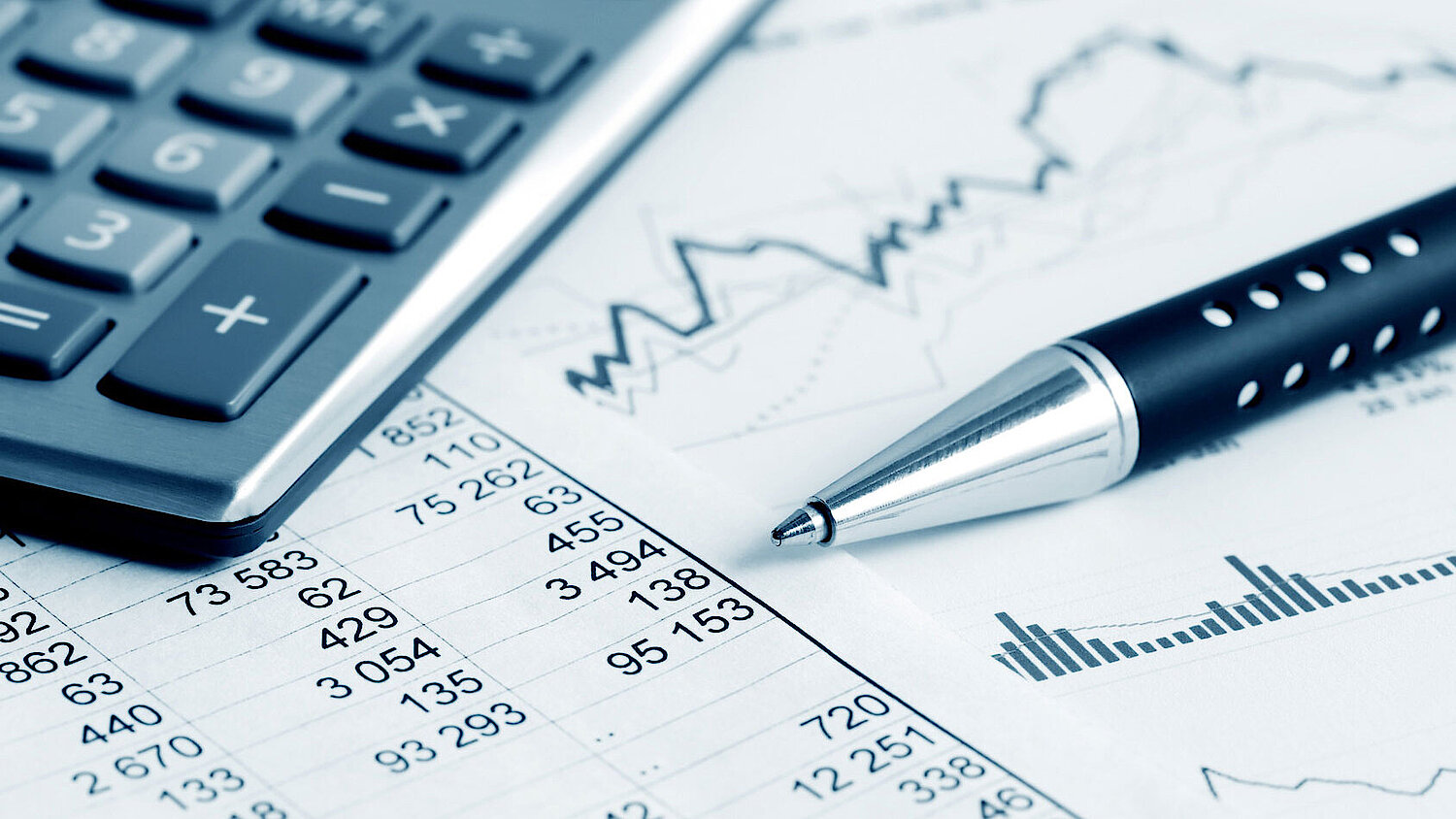Environmental policy and legal basis
Environmental accounts are mentioned as a requirement in the directions for the EU on environmental indicators and green national accounting. Their aim is to better depict the interaction between society and environment. In a resolution of 1996, the Austrian National Council requested the greening of the traditional systems of national accounts. In the same year Eurostat made arrangements with the statistical offices of the EU member states under which modules for environmental accounts were to be developed. More than 25 years later, environmental accounts are an established environmental policy instrument and its results are used in key policy initiatives such as the European Green Deal or the EU's Environment Action Programme.

European Strategy for Environmental Accounts (ESEA)
In order to meet the growing need for information in the area of environmental economics in Europe, a multi-annual European Strategy for Environmental Accounts (ESEA) has been adopted at regular intervals since 2003 by the Statistical Program Committee, which is continually expanded and improved in cooperation with the member states. The ESEA 2018 (for the period 2019-2023) was adopted by the European Statistical System Committee (ESSC) in February 2019. A new strategy is currently being developed for the period 2024-2028 and will come into force at the beginning of 2024.
Communication of the Commission on GDP and beyond of 20.8.2009
In its Communication of 20. August 2009, the European Commission set out specific steps to help measure progress beyond GDP. One of the five actions identified as relevant is the requirement to extend national accounts to environmental and social issues.
Regulation (EU) No 691/2011 on European environmental economic accounts and amending Regulation (EU) No 538/2014 of the European Parliament and of the Council of 16 April 2014.
In accordance with the Communication of the Commission on GDP and beyond, and with the targets of the Europe 2020 strategy, Regulation (EU) No 691/2011 provided for the development of a data framework that consistently includes environmental issues, in combination with economic ones, as a basis for environmental policy decisions.
Based on the data available in the member states, the Regulation initially included three modules for environmental accounts, namely air emission accounts, environmentally related transfers and material flow accounts (MFA).
The mandatory development and introduction of additional modules, as required under the Regulation, was implemented in Regulation (EU) No 538/2014 which was published in April 2014. This Regulation extended the scope of the original Regulation to include new modules such as environmental protection expenditure, the environmental goods and services sector (EGSS) and physical energy flows (PEFA).
Environmental accounts and the European Green Deal
The European Green Deal describes the growth strategy of the 27 EU member states to jointly overcome climate and environmental challenges and to become climate neutral as a continent by 2050 through a modern and resource-efficient economy. The European Green Deal is also an integral part of the European Commission's strategy to implement the 2030 Agenda and the UN Sustainable Development Goals.
In order for the goals of the European Green Deal to be achieved and the necessary transformation of society and the economy to take place, there are a number of initiatives in the various policy areas involved, such as the European Climate Law, the EU Strategy on Adaptation to Climate Change, the EU Biodiversity Strategy or the EU Circular Economy Action Plan.
The availability of high-quality and up-to-date data and information to monitor the effectiveness of the various initiatives and, in particular, to demonstrate the connection between economic transformation and environmental impacts is essential.
Environmental accounts provide a powerful, versatile information framework for addressing the sustainability aspects of our economic behaviour. A key feature of environmental accounts is the integration of environmental and economic aspects into a coherent system of economic accounts. Due to the uniform, systematic approach to their compilation for all EU member states, environmental accounts enable the evaluation of political measures and valid comparisons between member states.
In order to better cover the information needs of the European Green Deal, the European Commission is currently working on extending the scope of the European Environmental Accounts with the three new modules Forest Accounts, Ecosystem Accounts and Environmental Subsidies and Similar Transfers Accounts.
The information from the environmental accounts will be used for modelling and forecasting, as well as in the development of policy proposals and in reporting on the implementation and impact of policies. With the new modules, better integrated data sets will be available for these purposes.
The Eurostat visualization "Statistics for the European Green Deal" presents progress in the various thematic areas of the European Green Deal by means of 26 indicators. This already shows the importance of information from environmental accounts for measuring and presenting the implementation of the European Green Deal and thus also for measuring the progress of the European Commission's 8th Environmental Action Programme.
Environmental accounts and the 8th EU Environment Action Programme
With the Environment Action Programme, the European Union sets the objectives of European environmental policy for several years. The 8th Environment Action Programme builds on the European Green Deal. It commits the European Commission to establish a monitoring framework with headline indicators to track progress in the green transition and to ensure high-level strategic political control.
The headline indicators also include systemic indicators that show the connections between the ecological and social dimensions and the economy. The Commission reports annually on the progress made. Coherence between headline indicators and other cross-cutting monitoring programs will be promoted by the Commission.
Environmental accounts underpin the Eighth Environment Action Programme by building economic analyses and impact assessments on them. Specifically, indicators based on environmental accounts are used for the current monitoring framework.
Commission Delegated Regulation (EU) 2022/125 amending Annexes I to V to Regulation (EU) Nr. 691/2011 of the European Parliament and of the Council on European environmental economic accounts.
In order to meet the requirements and framework conditions regarding the environment, sustainability and climate change that have changed since the original regulation came into force, Regulation (EU) 2022/125 makes changes to Annexes I to V. This primarily involves updating the lists contained therein of characteristics for which data are to be created and transmitted, as well as the regulations on the frequency and transmission deadlines for the compilation of the environmental accounts. Regulation (EU) 2022/125 will come into force at the end of February 2022.
Currently, under the leadership of Eurostat, work is being done on the implementation of three further modules to amend Regulation No. 691/2011. Under Article 10 of the regulation, these three new modules can already be found as possible future extension modules for environmental accounts.
The draft amending Regulation contains the modules:
forest accounts
ecosystem accounts
environmental subsidies and similar transfers accounts
The main objective of the proposal is to extend the scope of the European environmental economic accounts to better serve the information needs of the European Green Deal, a new growth strategy that aims to transform the EU into a fair and prosperous society, with a modern, resource-efficient and competitive economy.
The legal act establishing the new modules might enter into force in later 2023 or early 2024, after completion of the legal procedure by the European Parliament and the Council.
Global dimension: SEEA
At the international level, a panel of experts from the UN Statistics Department published the statistical framework for the integrated system of environmental and economic accounting (SEEA - System of Environmental and Economic Accounting) in 2003.
In a revision process lasting several years, the SEEA was revised by the United Nations Statistics Commission (UNSC) together with the London Group - an international working group of experts on the subject of environmental accounts.
After a final global consultation process, the revised SEEA Central Framework was adopted by the UN Statistics Commission in 2012 as the first international standard for environmental accounts and published in its final version in 2014.
In addition, the UN has published two further parts of the SEEA.The extension SEEA - Experimental Ecosystem Accounting from 2014 defines an integrated, statistical framework for organizing biophysical data, measuring ecosystem services, tracking changes in natural resources in ecosystems and linking this information with economic and other human activities.Although the SEEA - Experimental Ecosystem Accounting does not have the status of an international statistical standard, it is nevertheless complementary to the calculation approaches of the SEEA Central Framework.
The extension SEEA - Applications and Extensions from 2017 describes possible applications of data, which are available according to the concepts of the SEEA - Central Framework, with regard to policy making, decision-making, analysis and research.
Stiglitz - Commission (Stiglitz-Sen-Fitoussi Report)
Given the unsatisfactory status of available statistical information on economy and society, an expert commission was established in 2008 upon the initiative of the French government under Nicholas Sarkozy.
The primary task of this “Commission on the Measurement of Economic Performance and Social Progress” was to identify the limits of the GDP as an indicator of economic performance and social progress.
The Commission, chaired by the Nobel laureate Joseph Stiglitz, prepared twelve recommendations which indicated what additional information would be required for the production of more relevant indicators of social progress.
The view of the Commission was that the report should be understood as a basis for further scientific work on the issue, and should be developed further in discussions with experts and professionals.
OECD
A document entitled "Recommendation of the Council on Material Flows and Resource Productivity", released by the OECD in 2004, gives recommendations on material flows and resource productivity that are aimed at the linkage of environmental and economic data.
The aim of the recommendations is primarily to make expert knowledge on material flows available through transnational cooperation, and to encourage efforts for the development and implementation of methods for data collection as well as indicators and measurement systems for material flows and resource productivity.
On the basis of the above recommendations, a “Recommendation of the Council on Resource Productivity“ was published in 2008. The aim of this recommendation was to further improve resource efficiency, so as to reduce negative environmental impacts from material consumption.
The term resource efficiency thus contains both a quantitative dimension (the quantity of output produced with a given input of natural resources) and a qualitative dimension (the environmental impacts per unit of output). Understood in this way, the efficient management of resources should contribute to economic growth and to the reduction of pressures on the environment, as well as ensure the long-term security of supply of these natural resources.

European Court of Auditors Report: European Environmental Economic Accounts - usefulness for policymakers can be improved.
In 2019, the European Court of Auditors published a report on its audit of whether the European Commission has well established, managed and used European Environmental Economic Accounts.
The audit revealed that the Commission did not developed a long-term perspective on the need for EEEA (European Environmental Economic Accounts) data for environmental policy-making. The Commission has neither identified the need for EEEA nor specified which indicators are required. Although there is a strategy for the EEEA, a comprehensive action plan to implement the goals was missing.
Based on the findings from the audit, the European Court of Auditors recommended that the Commission should improve:
the strategic framework for EEEA data;
the relevance of EEEA modules for environmental policy making;
the timeliness of EEEA data.
UNSD: System of Environmental and Economic Accounting Central Framework (SEEA 2012)
UNSD: System of Environmental and Economic Accounting - Experimental Ecosystem Accounting
UNSD: System of Environmental and Economic Accounting - Applications and Extensions
EU: Communication of the Commission on GDP and beyond - Measuring progress in a changing world
EU: European Strategy for Environmental Accounts 2019-2023
EU: 8th Environment Action Programme
EU: Website of the 8th Environment Action Programme
EU: Communication on the monitoring framework for the 8th Environment Action Programme
Stiglitz-Sen-Fitoussi Report: Measurement of Economic Performance and Social Progress
